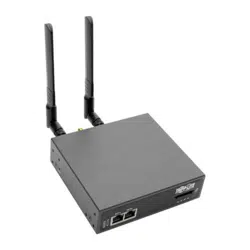Loading ...
Loading ...
Loading ...

217
14. Configuration from the Command Line
To remove port access:
# config -s config.users.user2.port1=’’ (the value is left blank)
or simply:
# config -d config.users.user2.port1
The port number can be anything from 1 to 48, depending on the available ports on the specific console server.
For example, assume we have an RPC device connected to port 1 on the console server and the RPC is configured. To allow
this user access to RPC outlet number 3 on the RPC device, run the commands below:
# config -s config.ports.port1.power.outlet3.users.user2=John
# config -s config.ports.port1.power.outlet3.users.total=2 (total number of users that have access to this outlet)
If more users are allowed access to this power outlet, increment the ‘config.ports.port1.power.outlet3.users.total’ element
accordingly.
To allow this user access to network host 5 (assuming the host is configured):
# config -s config.sdt.hosts.host5.users.user1=John
# config -s config.sdt.hosts.host5.users.total=1 (total number of users having access to host)
To allow another user named ‘Peter’ access to the same host:
# config -s config.sdt.hosts.host5.users.user2=Peter
# config -s config.sdt.hosts.host5.users.total=2 (total number of users having access to host)
To edit any of the user element values, use the same approach as when adding user elements (i.e. use the ‘-s’ parameter). If
any of the config elements do not exist, they will automatically be created.
To delete the user called John, use the delete-node script:
# ./delete-node config.users.user2
The following command will synchronize the live system with the new configuration:
# config -r users
14.1.3 Adding and Removing User Groups
The console server is configured with a few default user groups (though only two of these groups are visible in the
management console GUI). To determine how many groups are already present:
# config -g config.groups.total
Assume this value is six. Make sure to number any new groups you create from seven onwards.
To add a custom group to the configuration with Group name=Group7, Group description=MyGroup and Port access= 1,5 ,
issue the commands:
# config -s config.groups.group7.name=Group7
# config -s config.groups.group7.description=MyGroup
# config -s config.groups.total=7
# config -s config.groups.group7.port1=on
# config -s config.groups.group7.port5=on
Assume an RPC device is connected to port 1 on the console manager and the RPC is configured. To allow this group access
to RPC outlet number 3 on the RPC device, run the two commands below:
# config -s config.ports.port1.power.outlet3.groups.group1=Group7
# config -s config.ports.port1.power.outlet3.groups.total=1 (total number of groups that have access to this outlet)
If more groups are allowed access to this power outlet, increment the ‘config.ports.port1.power.outlet3.groups.total’
element accordingly.
To allow this group access to network host 5:
# config -s config.sdt.hosts.host5.groups.group1=Group7
# config -s config.sdt.hosts.host5.groups.total=1 (total number of groups having access to host)
Loading ...
Loading ...
Loading ...
